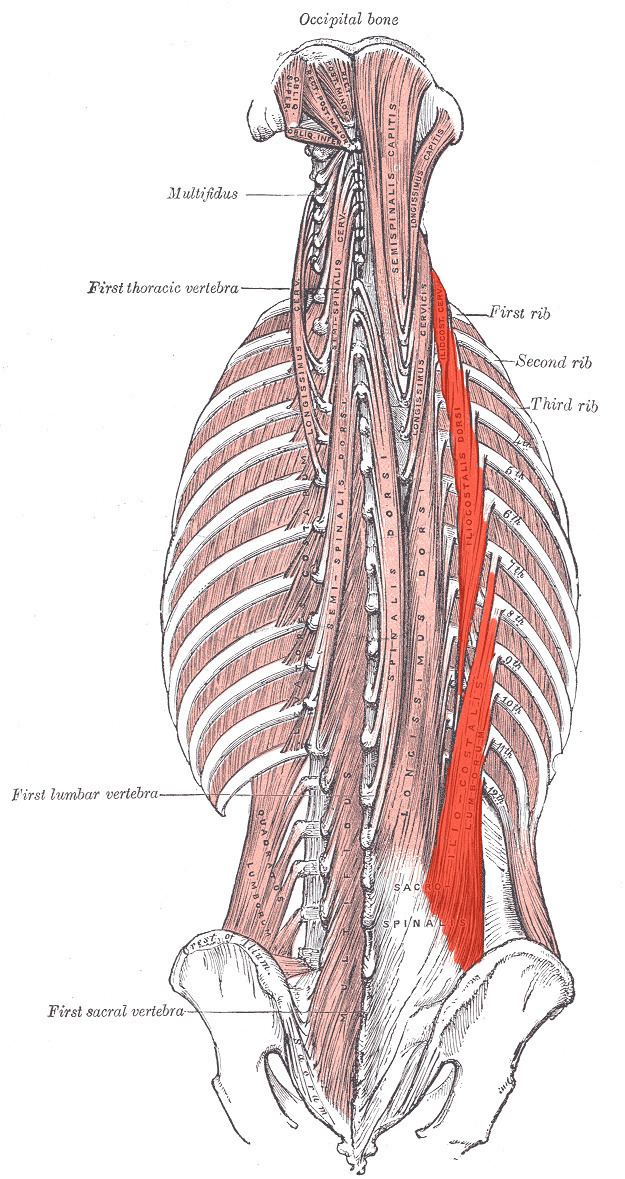Insertion Ribs | ||
 | ||
Nerve posterior branch of spinal nerve Actions Unilaterally: laterally flex the vertebral column to the same side. Bilaterally: Extend the vertebral column. Antagonist | ||
The iliocostalis is the muscle immediately lateral to the longissimus that is the nearest to the furrow that separates the epaxial muscles from the hypaxial. It lies very deep to the fleshy portion of the serratus ventralis (serratus posterior).
Contents
Iliocostalis cervicis
The iliocostalis cervicis (cervicalis ascendens) arises from the angles of the third, fourth, fifth, and sixth ribs, and is inserted into the posterior tubercles of the transverse processes of the fourth, fifth, and sixth cervical vertebrae.
Iliocostalis dorsi
The iliocostalis dorsi (musculus accessorius; iliocostalis thoracis) arises by flattened tendons from the upper borders of the angles of the lower six ribs medial to the tendons of insertion of the iliocostalis lumborum; these become muscular, and are inserted into the upper borders of the angles of the upper six ribs and into the back of the transverse process of the seventh cervical vertebra.
Iliocostalis lumborum
The iliocostalis lumborum (iliocostalis muscle; sacrolumbalis muscle) is inserted, by six or seven flattened tendons, into the inferior borders of the angles of the lower six or seven ribs.
